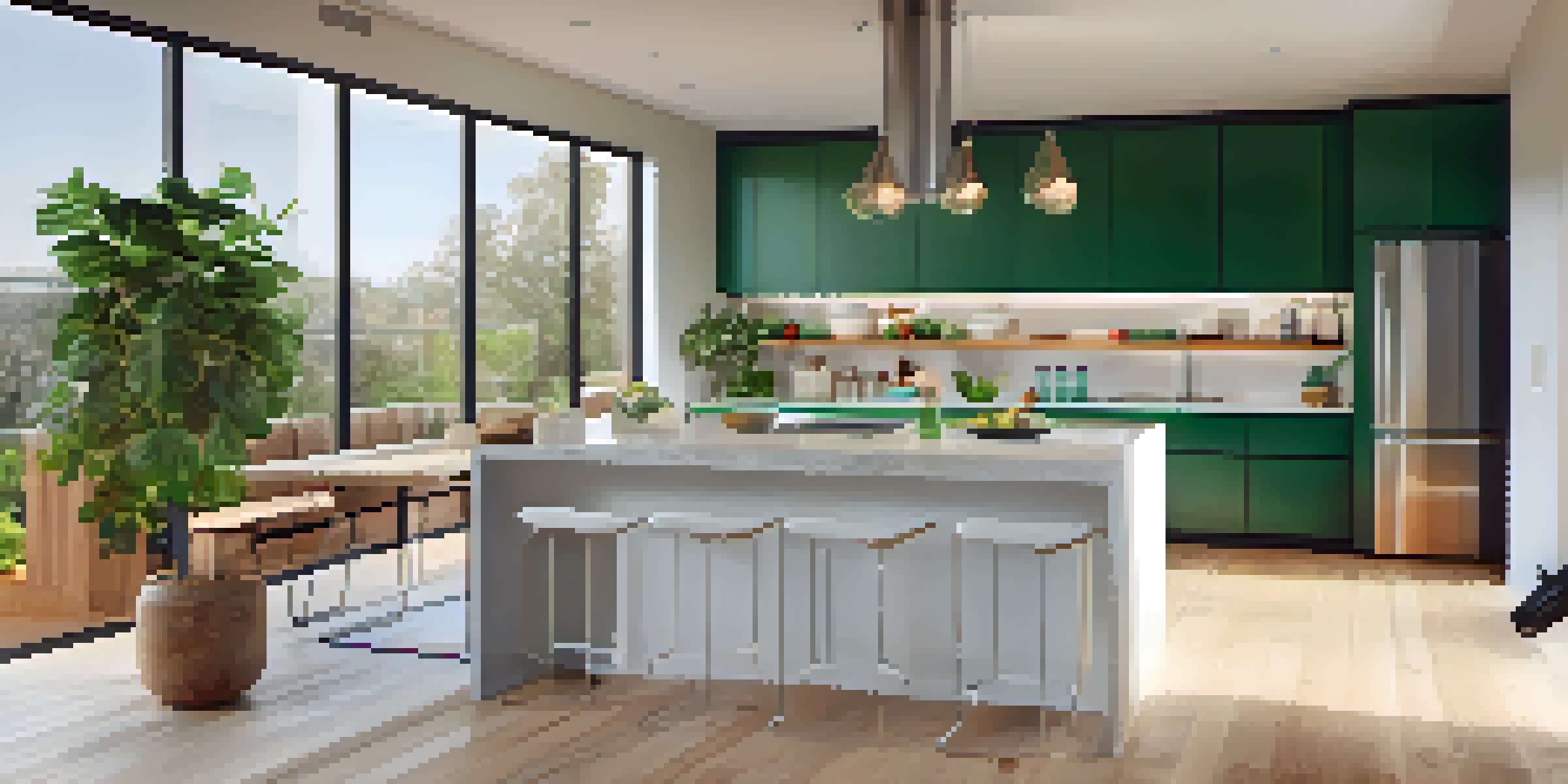How to Set a Realistic Budget for Your Home Renovation Project

Understand the Scope of Your Renovation Project
Before diving into numbers, take a step back and assess the scope of your renovation. Are you looking at a full remodel or just a few upgrades? Understanding what you want to achieve will guide your budgeting process significantly.
A budget is telling your money where to go instead of wondering where it went.
Consider factors like the size of the area you’re renovating and the extent of the work involved. For instance, a kitchen remodel may involve plumbing and electrical work, which typically increases costs. This clarity helps in anticipating expenses more accurately.
Take the time to outline your must-haves versus nice-to-haves. This distinction will not only help in managing your budget but also in making decisions later if you need to trim costs.
Research Average Costs and Trends in Your Area
Next, research the average costs of renovations similar to yours in your area. Websites like HomeAdvisor or Remodeling Magazine provide valuable insights into what you can expect to spend based on location and project type.

This step is crucial because renovation costs can vary significantly from one neighborhood to another. For example, a bathroom remodel in a suburban area might cost less than in an upscale urban environment.
Define Your Renovation Scope
Understanding the extent of your renovation helps in accurately estimating your budget and managing your priorities.
Understanding these regional trends will allow you to set a more realistic budget and avoid surprises later on. Plus, it helps in justifying your budget to any contractors you may hire.
Factor in the Hidden Costs of Renovation
When budgeting for renovations, it’s essential to account for hidden costs that can sneak up on you. These may include permits, inspections, or even unexpected repairs once you start tearing down walls.
By failing to prepare, you are preparing to fail.
A good rule of thumb is to allocate an extra 10-20% of your total budget for these unforeseen expenses. This buffer can save you from financial stress down the line and ensure your project stays on track.
For instance, if you're planning a $20,000 kitchen remodel, setting aside an additional $2,000 to $4,000 for surprises can help you handle any unexpected issues without derailing your budget.
Get Multiple Quotes from Contractors
Once you have a clearer picture of your budget, it’s time to reach out to contractors for quotes. Getting multiple estimates is key to ensuring you’re getting a fair price and understanding the market rate for your project.
When requesting quotes, provide detailed descriptions of your project so contractors can give you accurate estimates. This not only saves time but also helps in comparing apples to apples.
Research Local Renovation Costs
Investigating average costs in your area ensures you set a realistic budget and prepares you for potential expenses.
Keep in mind that the lowest bid isn’t always the best choice. Look for contractors with solid reputations, good reviews, and clear communication styles to ensure a smooth renovation process.
Prioritize Your Renovation Needs and Wants
As you finalize your budget, it’s important to prioritize your renovation needs over wants. Focus on areas that will add the most value to your home and enhance your daily living experience.
For example, if your kitchen is outdated and dysfunctional, prioritizing that over a luxury bathroom might make more sense for your lifestyle and budget. This way, your money is spent where it counts the most.
If your budget allows, you can still include some of your wants, but be strategic. Perhaps you can opt for more affordable finishes or DIY certain elements to save costs.
Plan for the Financing of Your Renovation
Once you’ve mapped out your budget, consider how you’ll finance the renovation. Many homeowners use savings, while others might explore options like home equity loans or personal loans.
Before committing to any financing option, ensure you understand the terms, interest rates, and your ability to repay. Calculate how these payments will fit into your monthly budget to avoid financial strain.
Monitor Your Budget Regularly
Tracking expenses throughout the renovation process allows you to stay on budget and avoid financial surprises.
Remember, a well-thought-out financing plan can help you manage your renovation without compromising your financial stability.
Monitor Your Budget Throughout the Renovation
Finally, once you start your renovation, keep a close eye on your budget. Track all expenses, even small ones, to see where your money is going and if you’re staying within your planned limits.
Tools like spreadsheets or budgeting apps can help you manage expenses easily. Regular check-ins can alert you to any areas where you might need to adjust your spending or make tough decisions.

Being proactive about your budget will help ensure that you can complete your renovation without any unwanted surprises, allowing you to enjoy your newly transformed space stress-free.